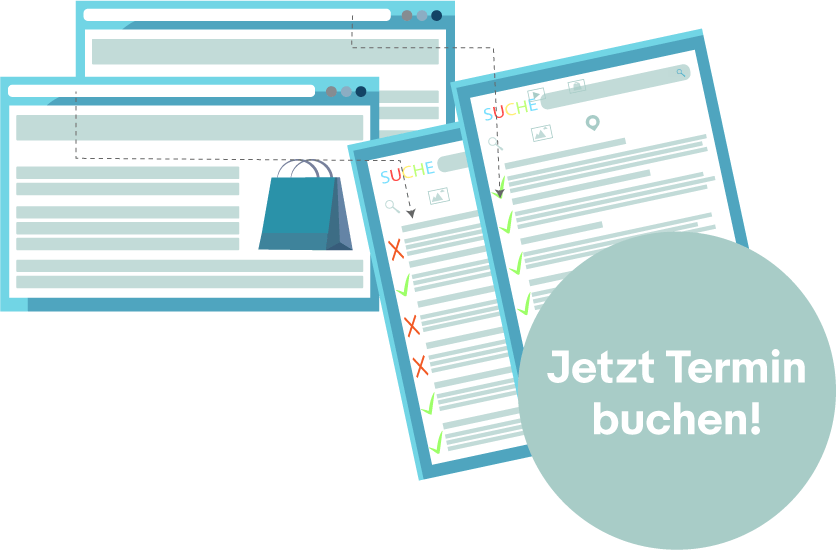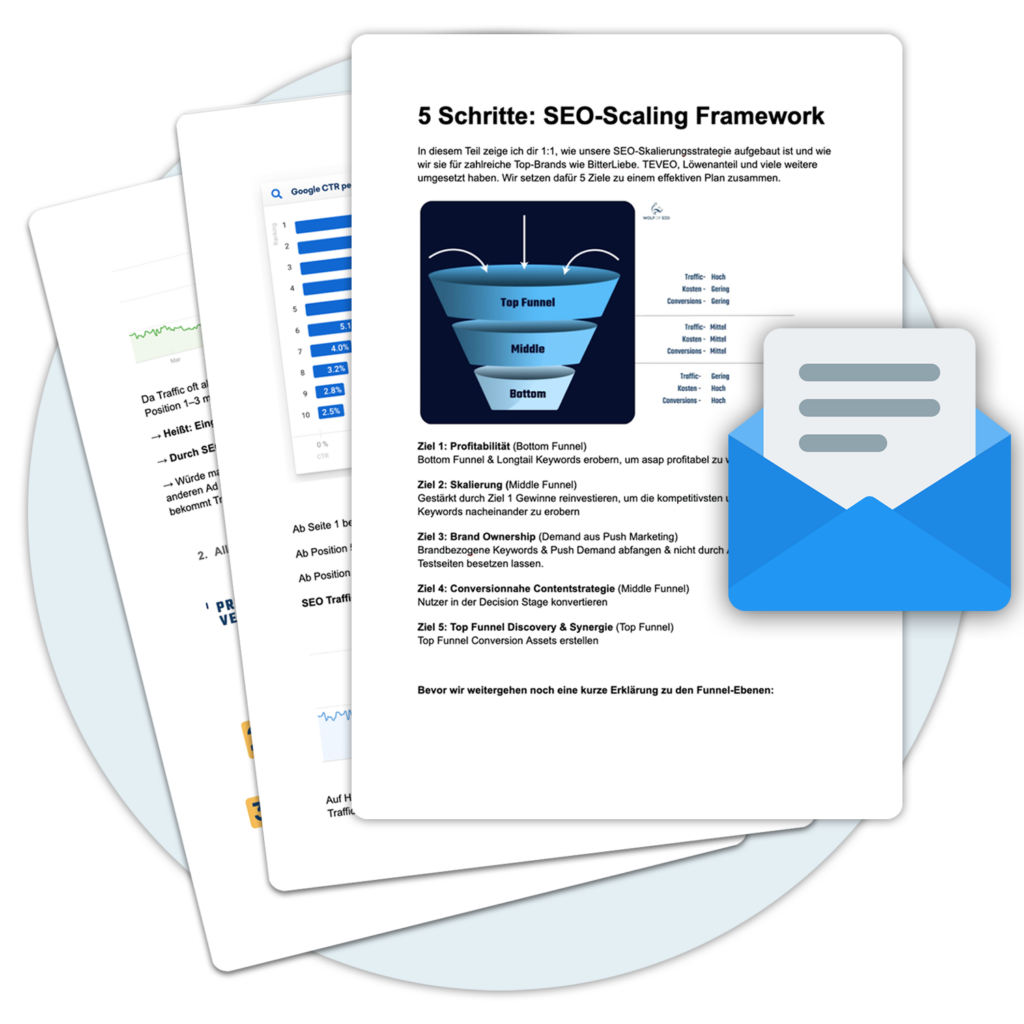What Google knows about you
In today's digital era, it is no longer a secret that companies collect large amounts of data to improve their services and provide personalized experiences. Google, as one of the largest technology giants in the world, is often at the center of this discussion. The information Google collects about its users comes from a variety of sources and is used in many different ways.
Sources of data collection
Google's extensive data collection begins with the search queries that users enter on the platform. These search queries provide insights into users' interests, needs and preferences. In addition, Google collects data through users' interactions with various Google services, such as Google MapsGoogle Assistant and YouTube. The activities on websites visited that use Google ads or services are also included in the data collection, as is the information provided directly by users via their Google accounts.
Creation of user profiles
Google uses the collected data to create individual profiles for each user. These profiles contain detailed information about the user's interests, preferences and even location. Linking activity data with a Google account enables even more precise personalization of the user experience, for example through tailored advertisements or personalized Search results. It is interesting to note that Google collects anonymous data to analyze trends and improve the overall user experience even without a registered Google account.
Management and control by the user
Despite the extensive collection of data, Google offers users various tools to manage their data. About the Google Dashboard users have an overview of the services linked to their account and the data collected. The "My Google Activities" function allows users to view their own search history, browsing history, location history and other activities and delete them if necessary. Users can also specify in the advertising settings whether or not they wish to receive personalized advertising. For even more detailed control, Google offers tools such as the Google Maps-Google Takeout also includes a timeline to view location history and the "Manage apps' access to your account" page to check which apps have access to the account and what permissions have been granted. Finally, Google Takeout allows you to download and export stored data, giving users full transparency over the information Google collects.
Data collection by Google
Google is known for using a wide range of technologies and processes to collect data about its users and personalize their experiences. The methods of data collection range from direct input to indirect tracking technologies. Google does this both with and without specific user accounts. The diversity and breadth of data collection enables the company to offer complex and customized services.
Data collection via search queries
The core of Google's data collection is what users enter into the search bar. Every search query is stored and analyzed in order to identify trends and continuously improve the search algorithms. This search data can reflect very personal interests or concerns and serves as the basis for personalizing the search experience. Search results.
Interaction with Google services
Every use of a Google service, be it Google Maps for navigation, a request to the Google Assistant or watching a video on YouTube all contribute to data collection. These activities provide detailed insights into users' preferences and habits. Location data, requested information and interaction patterns are recorded, as is the duration of use of certain services.
Use of third-party websites and apps
Google also collects data on surfing behavior outside of its own services. Through the use of Google Analytics and Google Ads On third-party websites and apps, Google may collect information about the user's interactions with these services. Such data includes, among other things, pages visited, purchases made and interactions with advertisements. This information is often anonymized, but can be linked to a Google account if the user is logged in at the same time.
Collection via Google accounts
A Google account bundles all of a user's activities and data across various services. It enables detailed personalization and data processing that goes beyond what would be possible through anonymized tracking. Information such as location history, saved search queries and interactions with Google Search or the Google Play Store are linked to the account. This allows Google to seamlessly integrate its services and provide a highly personalized user experience.
Options for viewing and controlling data
Google offers various tools and settings that give users insights into the data collected and allow them to control how it is used. These include the Google Dashboard for a comprehensive overview, "My Google Activities" for viewing and deleting activity histories and the option to deactivate or adjust personalization in the ad settings. These tools are central to Google's efforts to create transparency in the handling of user data and to give users control over their personal information.
How Google creates user profiles
At the heart of Google's personalized services is the creation of detailed user profiles. These profiles are the result of a comprehensive analysis of data collected from various sources. They enable Google to offer customized experiences based on users' individual preferences and interests.
Integration of data from various sources
Google collects information from users' interactions with its services, such as search queries, use of Google MapsGoogle Assistant and YouTube. In addition, data from interaction with advertisements and websites visited that use Google services such as Analytics are integrated into the profiles. Even if users are not actively logged in, Google collects anonymized data that provides insights into user behavior. For logged-in users, this data is analyzed even more comprehensively and linked to their Google account to create a complete picture of their digital activities.
Personalization through data analysis
The data collected enables Google to identify patterns and preferences in user behavior. Using advanced algorithms and machine learning, Google analyzes this data to identify preferences regarding certain topics, interests and activity patterns. This analysis leads to the design of individual user experiences, for example by displaying personalized advertisements or Search results that are precisely tailored to the interests and needs of the user.
The role of location and other activity-related data
An essential component of user profiles is the analysis of location and other activity-related data. Google uses the location histories to offer services such as personalized traffic information or local weather forecasts. By evaluating movement patterns, Google can, for example, identify preferred locations and routes and make individual recommendations based on these. This dynamic adaptation of services to users' lifestyles and habits makes the use of Google products more intuitive and relevant.
Google also offers various tools and settings options that give users transparency and control over their data. They can review, manage and, if necessary, customize their data usage. This level of personalization and control strengthens users' trust in Google's ability to respect their privacy while providing a highly customized digital experience.
Managing your data in Google services
Google provides its users with a range of tools and settings options that allow them to effectively manage their personal data. These tools offer users the opportunity to shape their privacy and data control within the Google ecosystem according to their wishes.
Access and overview with the Google Dashboard
The Google Dashboard serves as a central point of contact to get a comprehensive overview of the services connected to a Google account and the data stored in them. Users can see in detail what information is stored in services such as Gmail, Google Maps or YouTube are stored. This provides a transparent view of your own data and makes it easier to manage your personal information.
Checking and deleting activities with "My Google activities"
With "My Google Activities", Google offers another important function that allows users to view, search and delete their activity history. This includes search history, browsing history, location history and interactions with Google services. The ability to delete this data selectively or completely strengthens the user's right to be forgotten and enables fine-grained management of digital footprints.
Customization of advertising settings
In the advertising settings, users have the option of controlling their preferences with regard to personalized advertising. They can choose to receive ads based on their interests or disable this option. These settings affect how the user's data is used to personalize advertising on Google services and on partner websites and apps. This gives users greater control over how their information is used for advertising purposes.
Location history and Google Maps timeline
The Google Maps Timeline is a special tool that gives users insight into their location history. Users can review their daily movement patterns, delete specific locations and routes or even deactivate the entire location history. This feature increases transparency about how location data is collected and used and allows users to manage their location history as needed.
Management of app authorizations
On the "Manage apps' access to your account" page, users can see which third-party apps have access to their Google account and what specific information they can access. Users have the option of checking these permissions individually and revoking them if necessary. This control protects against unwanted access by third-party applications and strengthens data security.
Export and download data with Google Takeout
Google Takeout allows users to download a copy of their data stored in Google services. This feature supports data portability and allows users to maintain an archived collection of their personal information. The wide range of data that can be exported, from emails to photos, makes Google Takeout a valuable tool for anyone who wants to back up their data or transfer it to other services.
By providing these tools, Google ensures that users are able to effectively manage and control their personal data. The ability to gain insight into, manage and export the data collected strengthens users' trust in the platform and promotes responsible use of the services.
Overview with Google Dashboard
The Google Dashboard is a central platform that provides users with a comprehensive overview of their data stored in the various Google services. From Gmail and Google Drive to Google Photos and YouTube, users can access a detailed summary of their activities and collected information from a single location. This one-stop shop for data management makes it much easier to access and control personal information.
Insights into your Google usage
Within the dashboard, users can see what data is stored in the individual services. This includes emails, documents, uploaded photos and videos as well as search queries and browsing histories. This transparency is particularly valuable for developing an understanding of the breadth and depth of the information collected. In addition, users can access data control settings directly from here to customize their privacy preferences.
Management of your Google services
Another core function of the dashboard is the simple management of the various Google services. Users can change specific settings, check subscriptions and make adjustments to optimize the user experience. It also provides links to further help pages and data protection guidelines so that users can find out in detail about the use of their data and take appropriate measures.
Management of devices and security settings
In addition, the Dashboard valuable information on the security of the Google account. Users can see which devices have access to their account and revoke this access if necessary. Security settings are also centralized here so that users can easily change passwords or activate two-factor authentication. These functions make a significant contribution to increasing security and protecting privacy.
By offering the Google Dashboard, Google is committed to transparency and control in the handling of user data. By providing users with easy access to their data and the ability to manage this information, Google strengthens trust in its services and promotes conscious use of the platform.
Insight into your activities with "My Google activities"
"My Google Activities" is a powerful tool that provides users with a comprehensive insight into their interactions with various Google services. This platform allows users to monitor and control their own search history, browsing history, location history and other activities.
Search and manage your history
Users can search their entire digital history on Google under "My Google Activities". This includes not only search queries, but also interactions with services such as YouTube, Google Maps and the Google Assistant. The platform makes it possible to filter this information by date or topic, which makes it easier to find specific activities. Users also have the option of deleting their history at will - be it an individual entry, activities from a specific time period or the entire history.
Control over your data
The security and privacy of users are paramount. That is why "My Google Activities" offers the option of viewing and deleting your own history as well as controlling the way in which your activities are recorded. Users can decide whether and to what extent their activities should be saved at all. This includes settings for web and app activities, location history and the collection of information about interactions with Google ads.
Transparency and comprehensibility
Google has designed "My Google Activities" with the aim of providing users with transparency about the data collected. The platform explains in an understandable way why certain data is collected and how it can improve the user experience. This open communication helps users to make informed decisions about their data on Google. By providing details about stored data and its uses, Google strengthens the trust of its users and promotes conscious data management.
With "My Google Activities", Google is setting a standard for data-related transparency and user control. The platform shows that the company takes users' right to data protection and information autonomy seriously and offers tools to implement these rights in practice.
Customization of advertising settings
The customization of advertising settings in Google services plays a crucial role in the way users interact with personalized advertising. Google enables users to customize their advertising experience by allowing them to adjust preferences regarding the ads they see.
Control over personalized advertising
The option to activate or deactivate personalized advertising is at the heart of the adjustment of advertising settings. Personalized advertising is based on the user's previous activities, such as websites visited, apps used or interactions with other Google services and advertisements. By disabling this feature, users will still see ads, but they will not be based on interests and previous online behavior.
Viewing and adjusting interest categories
Google also offers users the opportunity to get a deeper insight into the categories that are used for their personalized advertising. Users can view specific topics derived from their activities and interests and make adjustments as needed. Adding or removing interest categories makes it possible to customize the Relevance and usefulness of the advertisements displayed.
Transparency and control
Google is committed to transparency in the handling of user data, especially when it comes to customizing advertising settings. The advertising settings are designed to give users a clear overview of how their data is used for advertising purposes. This includes detailed information about why certain ads are displayed and how users can manage their settings for a personalized advertising experience. This transparent approach ensures that users can make a conscious and informed choice about the type of advertising they want to see.
By providing these flexible and user-friendly tools for customizing advertising settings, Google aims to make the advertising experience more enjoyable and relevant for users, while ensuring privacy and control over personal data.
Your location history with Google Maps
Control over your own location history is playing an increasingly important role in user privacy these days. Google Maps offers users extensive tools to keep track of and manage their location history. Transparency and control of your own location history are central components of the service.
Access and manage your location history
Users have the option to view their location history at any time in Google Maps to view. This enables accurate tracking of the places they have visited and provides insights into their movement patterns. The Google Maps Timeline visualizes this information in an easy-to-understand way and allows users to view specific days, time periods or activities. It is also possible to delete individual locations or the entire history directly from the timeline in order to retain control over the stored data.
Personalization and data protection
The individual settings option for location history not only offers the opportunity to improve the personal user experience, but also protects privacy. Users can decide whether and to what extent their location history is saved. They can pause or completely deactivate storage at any time, which prevents Google from collecting further location data. Adjustments can also be made to control the level of detail of the data collected.
Transparency in the use of data
Google attaches great importance to communicating to users how and why their location history is used. The data collected is used to improve services such as traffic forecasts or personalized recommendations. Users receive complete information on how their location history contributes to the improvement of Google services and what data protection measures are taken to protect their information. This promotes understanding and trust in the use of personal data by Google.
By providing these detailed control and management options, Google helps its users to maintain their privacy in the digital space. The ability to precisely control and monitor location history strengthens users' autonomy in handling their personal data and contributes to responsible data management.
Export and download your data with Google Takeout
Google Takeout is an innovative tool that allows users to download a copy of their data stored by Google. This feature reflects Google's commitment to transparency and user control and allows people to export their data in various formats and use it for their own purposes.
A comprehensive data backup
With Google Takeout, users can choose which data they want to export. The range of data that can be exported includes emails from Gmail, contacts, calendar entries, photos and videos stored in Google Photos, documents and spreadsheets from Google Drive as well as data from other Google services such as YouTube or Google Maps. This flexibility makes it a valuable tool for users who want to perform a comprehensive backup of their data or switch platforms and take their data with them.
Customizable export
Another advantage of Google Takeout is the ability to personalize the export. Users can select specific services for the export or opt for a complete export of all available Google data. They can also specify the preferred file format and archive file size, making it easier to handle the downloaded data. These customization options help ensure that users receive exactly the data they need in a format that meets their requirements.
Easy handling and data protection
Google has designed the process of exporting and downloading data in such a way that it is easy for users to understand and carry out. After selecting the data to be exported and the format, Google creates an archive that the user can download directly. Throughout the process, the data is handled securely to ensure the user's privacy is protected. This underscores Google's commitment to privacy and security by giving users control over their personal information while ensuring that this information is protected.
Through Google Takeout, Google provides an important data management resource that allows users to back up, migrate or simply get an overview of the information they have collected. This service strengthens users' trust in Google by demonstrating that the company takes the importance of access and control over personal data seriously.
« Back to Glossary Index






